
about_the_usa
.pdf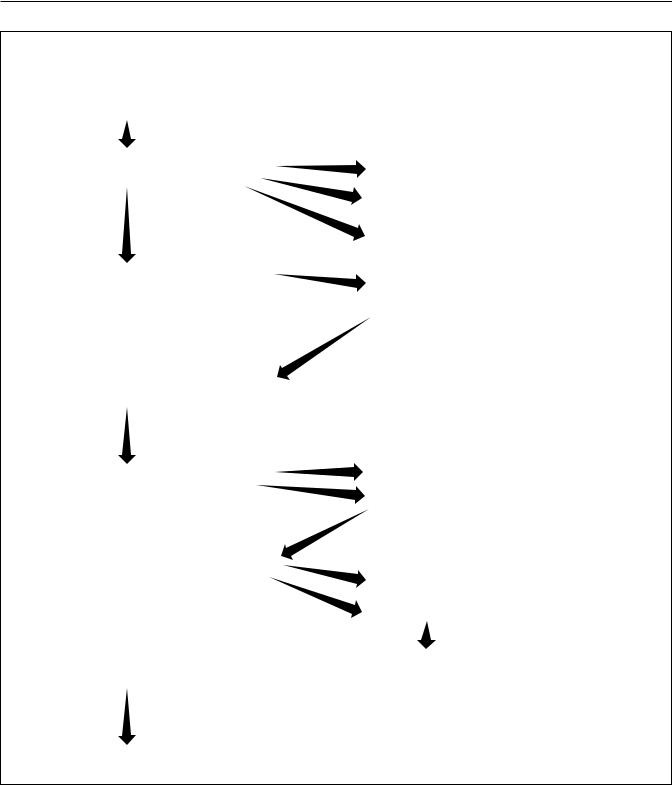
92 Module 6B / The Legislative Branch
HOW CONGRESS MAKES LAWS
1.A Senator or Representative writes a bill. 1
2.The bill goes to a committee of the Senate or House.
3.The full Senate or House debates the bill and can amend it.
 The committee can call public hearings. It can table (postpone) the bill.2
The committee can call public hearings. It can table (postpone) the bill.2
It can send the bill back to the full house without a recommendation.3
It can amend (change) the bill.
The Senate or House defeats the bill.  The Senate or House passes the bill.
The Senate or House passes the bill.
4.The bill goes to a committee of the other house.
5.The second house debates the The second house defeats the bill.
bill. 4 |
The second house passes the bill. |
|
|
6. The bill goes to the President. 5 |
The President signs the bill, and it |
|
|
|
becomes law. |
|
The President vetoes (rejects) the bill. |
7.Congress overrides the veto  The bill does not become law. (passes the bill).
The bill does not become law. (passes the bill).
8.The bill becomes law.
1A bill concerning taxes or the budget must begin in the House of Representatives.
2If a committee tables a bill, Senators or Representatives can force it out of committee with a majority vote.
3This step often “kills” the bill.
4If the second house of Congress amends the bill, the first house must agree to the changes.
5If the President does nothing and Congress adjourns within ten days, the bill does not become law.

UNIT 6 / The Federal Government 93
Module 6C: The Executive Branch
A Work in pairs. Look only at this page and ask your partner these questions about the President of the United States. Your partner will tell you the answers from the next page. Take notes on the information.
1.What are the qualifications (requirements) for President?
2.What are the qualifications for Vice President?
3.For how many years may a President serve?
4.If the President dies, who becomes President?
5.Where does the President live and work?
6.How should people address the President?
B Work in pairs. Look only at this page and tell your partner the steps in electing a President.
1.Political parties choose their candidates in state caucuses (conventions) or state primaries (elections).
2.Political parties hold national conventions to choose their candidates for President and Vice President. Convention delegates vote for the choices of the voters in their states.
3.All candidates campaign until election day, the first Tuesday after the first Monday in November. Then the voters make their choices.
4.Electors (members of the Electoral College) cast their votes for President and Vice President. The candidates with the majority (more than half) of the electoral votes win.
5.If no candidate wins the majority of the electoral votes, the House of Representatives chooses the new President.
6.The new President takes office during the inauguration (formal ceremony) on January 20 after the election.
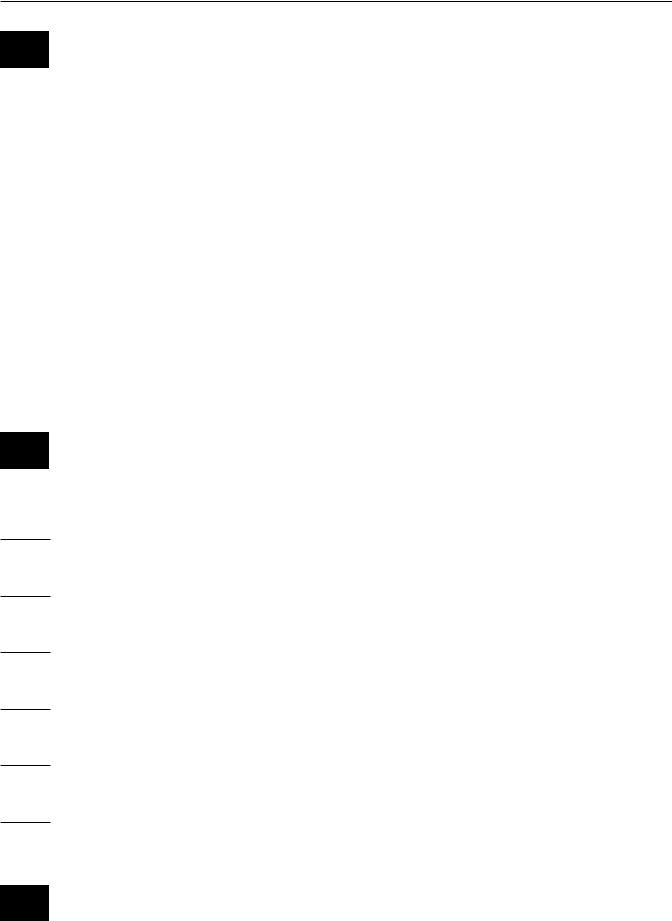
94 Module 6C / The Executive Branch
C Work in pairs. Look only at this page. To answer your part ner’s questions about the President, find the information and tell it to your partner. He or she will take notes.
•The President travels a lot, but he or she lives and works at the White House in Washington,
D.C.
•The President’s term of office is four years, and no President may serve for more than two terms in a row.
•To qualify to serve, the President must be a born U.S. citizen and at least thirty-five years old. He or she must have lived in the United States for at least fourteen years.
•Visitors address him as Mr. President.
•The qualifications for Vice President are the same as the qualifications for President.
•If the President dies, these officials take over the position in this order: the Vice President, the Speaker of the House of Representatives, the President pro tempore of the Senate, the Secre tary of State, the other twelve members of the Cabinet.
D Work in pairs. Your partner will tell you the steps in elect ing a President. Number them 1-6 on the lines in
correct order.
Electors (members of the Electoral College) cast their votes for President and Vice President. The candidates with the majority of the electoral votes win.
Political parties hold national conventions to choose their candidates for President and Vice President. Convention delegates vote for the choices of the voters in their states.
The new President takes office during the inauguration (formal ceremony) on January 20 after the election.
If no candidate wins the majority of the electoral votes, the House of Representatives chooses the new President.
All candidates campaign until election day, the first Tuesday after the first Monday in November. Then the voters make their choices.
Political parties choose their candidates in state caucuses (conventions) or state primaries (elections).
E In your own words, tell the steps in electing a President.
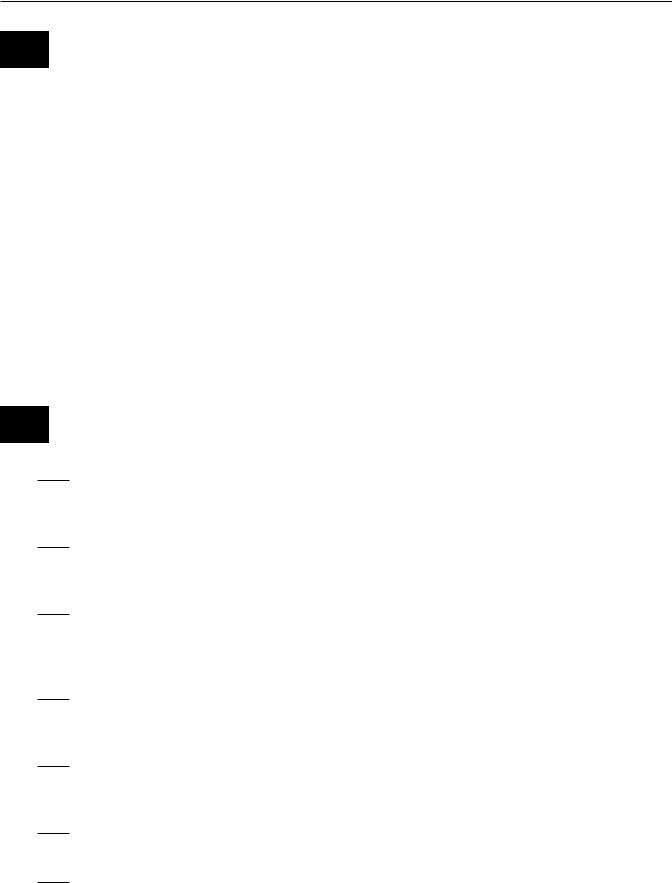
UNIT 6 / The Federal Government 95
F The Electoral College
U.S. citizens do not vote on federal laws because the U.S. system of government is a represen tative democracy, but they do choose the President and Vice President of the United States. However, the system of electing these officials is an indirect one.
When voters choose candidates on election day, they are actually voting for presidential “elec tors.” The numbers of electors in each state is equal to the number of senators and representatives from that state in Congress. Because states with large populations have more representatives than states with fewer people, they have more power in an election. The Electoral College is based on a “winner-take-all” system. The winner of the majority of votes in each state gets all of that state’s electoral votes. For example, the candidate with over fifty percent of the popular (total) vote in California gets all of that state’s electoral votes, even if he or she won with only a small majority.
Because of the Electoral College system, occasionally the candidate with the majority of the popular vote loses the presidential election. This is unusual, however.
In December the electors meet in their state capitals to cast their votes and send them to the U.S. Senate. On January 6 the members of Congress meet to count the votes.
G Write T for true and F for false. Correct the false sentences.
1.U.S. citizens vote on federal laws, but they can’t vote for Presidential or Vice Presidential candidates.
2.Voters choose the President and the Vice President of the United States directly through the popular vote.
3.Large states have more electoral votes than small states because their number of electors depends on the number of senators and representatives from the state in
Congress.
4.Candidates receive the same percentage of electoral votes from each state as their percentage of popular vote.
5.Even if a candidate receives forty-nine percent of the votes in a state, he or she “loses” the state (gets no electoral votes) in a “winner-take-all” system.
6.The candidate with the majority of the popular vote can still lose the national election.
7.The electors of the Electoral College meet to cast their votes, and the members of Congress meet to count them.
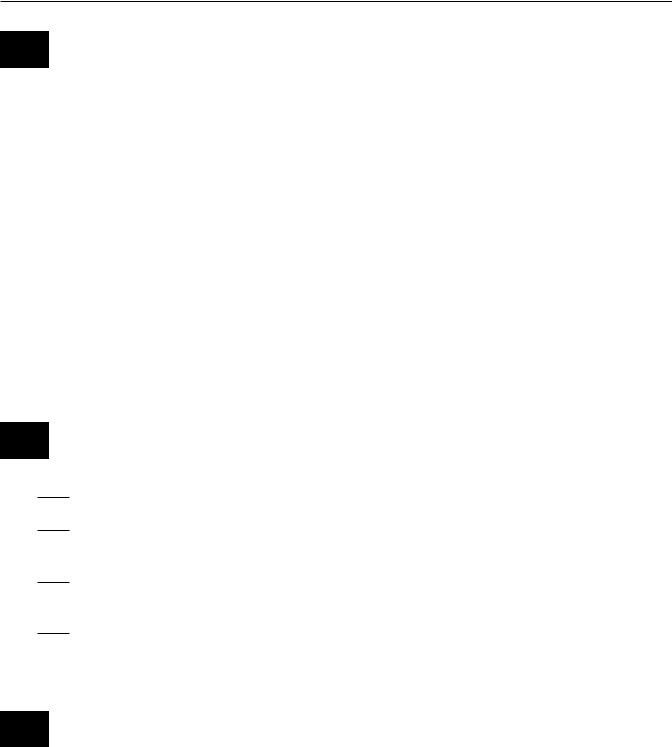
96 Module 6C / The Executive Branch
H The Cabinet, the Departments, and the Agencies
It is the responsibility of the executive branch of the federal government to enforce the U.S. Constitution and federal laws. The President is the Chief Executive and head of the government. The Vice President, the fourteen Cabinet members (usually called Secretaries) and their Departments, and the federal agencies are also part of the executive branch.
The President chooses the members of his Cabinet (the heads of the departments), and the Senate approves his choices. The fourteen departments are the Departments of:
State |
the Interior |
Health and |
Transportation |
the Treasury |
Agriculture |
Human Services |
Education |
Defense |
Commerce |
Housing and Urban |
Energy |
Justice |
Labor |
Development |
Veterans Affairs |
Many federal agencies provide special services and may be temporary. Some well-known agencies are the Civil Rights Commission, the Environmental Protection Agency, the Federal Trade Commission (FTC), the National Aeronautics and Space Administration, the United States Postal Service, and the Veterans Administration (VA).
I Write T for true and F for false. Correct the false sentences.
1.The executive branch makes laws but does not enforce them.
2.The Vice President, the Chief Executive of government, chooses the members of the Cabinet with the approval of the voters.
3.There are fourteen government departments, and their heads are usually called Secretaries.
4.The State Department, the Department of the Treasury, and the Department of Commerce are federal agencies.
J Do you remember or can you guess the functions of the officials and the departments and agencies of the execu tive branch? Complete this sentence in various ways.
EXAMPLE: It is the responsibility of the Department of State to advise the President in foreign policy.
It is the responsibility of |
|
to |
|
. |
|
|
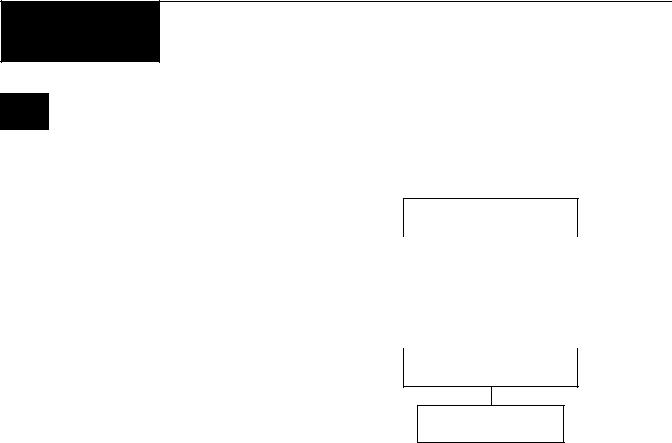
UNIT 6 / The Federal Government 97
Module 6D: The Judicial Branch
A Work in groups. Discuss these questions about the judicial branch of the federal government and decide on the answers. Then check your answers on the next page.
Supreme Court
1.What is the highest court of the land?
a.the Supreme Court
b.the Presidential Tribunal
2.The Supreme Court is the “Last Court of Appeal.” What does this mean?
a.No other court has higher decision-making power.
b.Citizens can appeal its decision (take the same case) to lower courts.
|
|
|
|
|
|
|
|
|
|
|
|
|
|
|
|
|
|
|
|
|
|
|
|
Court |
|
Court |
|
|
Court |
|
Court |
||||
|
|
|
of Customs |
|
|||||||
of |
|
of |
|
|
|
of Military |
|||||
|
|
|
and Patent |
|
|||||||
Claims |
|
Customs |
|
|
|
Appeals |
|||||
|
|
|
Appeals |
|
|||||||
|
|
|
|
|
|
|
|
|
|
||
|
|
|
|
|
|
|
|
|
|
|
|
|
|
|
|
|
|
|
|
|
|
|
|
11
Circuit Courts of Appeals
94 District Courts
3.What does the Supreme Court do?
a.It approves or overturns decisions of lower courts and explains and interprets laws.
b.It hears cases from individual citizens without lawyers.
4.In the system of checks and balances, how does the judicial branch have power over the other two branches of government?
a.The Supreme Court appoints all judges.
b.The Supreme Court can decide on the constitutionality of laws and Presidential actions.
5.Where is the Supreme Court?
a.in every state capitol
b.in Washington, D.C. (the nation’s capital)
6.Who chooses the justices of the Supreme Court?
a.The voters elect them.
b.The President appoints them, but the Senate must approve them.1
7.Who chooses the Chief Justice (head judge) of the Supreme Court?
a.the President and the Cabinet
b.The nine justices of the Supreme Court elect him or her.
1 As an example, in 1987 the Senate rejected President Reagan’s candidate, Robert H. Bork, because the Democrats (the majority party) thought he was too conservative.

98Module 6D / The Judicial Branch
8.Has there ever been a woman Supreme Court justice?
a.Yes. Sandra Day O’Connor became the first woman justice in 1981.
b.No, because the Constitution states that all Supreme Court justices must be men.
9.How long do Supreme Court justices serve?
a.for the same length of time as senators from their states
b.for life
10.Must the Supreme Court hear all appeals from lower courts?
a.Yes, because hearing appeals is its only responsibility.
b.No. It takes only the more important cases (especially cases concerning individual rights and the constitutionality of laws or actions).
11.Can the President or Congress abolish the Supreme Court?
a.Yes, with a two-thirds majority of both houses.
b.No. Only a ConstitutionalAmendment could abolish it.
12.What other kinds of courts and how many of them are there in the federal system?
a.eleven Circuit Courts ofAppeal and ninety-four District Courts
b.two Executive Courts and three Legislative Courts
13.Are there any special federal courts?
a.Yes. There are a Court of Claims, a Court of Customs, a Court of Customs and Patent Appeals, and a Court of MilitaryAppeals.
b.No.All courts must accept all kinds of cases.
14.What do the Circuit Courts ofAppeals do?
a.They hear appeals (requests to hear the case again) from lowercourts.
b.They overturn decisions of the Supreme Court.
15.What are the District Courts and what happens in them?
a.They are state courts.All cases concerning state laws begin there.
b.They are the lowest level of federal courts. Federal cases begin there.
16.How do federal courts differ from other courts?
a.Federal courts take only cases concerning federal law. Other courts hear cases about state or local law.
b.There is no difference.All courts take the same kinds of cases.
Answers to Exercise A: 1. a 2. a 3. a 4. b 5. b 6. b 7. b 8. a 9. b 10. b 11. b 12. a 13. a 14. a 15. b 16. a

UNIT 6 / The Federal Government 99
B Supreme Court Decisions
Supreme Court decisions are very important to the nation because they set precedents. They serve as a guide in law making and the future decisions of all courts. Here are some examples.
Year |
Case |
Decision |
|
|
|
1803 |
Marbury v. |
The Supreme Court has the right to interpret |
|
Madison |
laws and judge their constitutionality. |
|
|
|
1824 |
Gibbons v. |
Only Congress can regulate interstate commerce |
|
Ogden |
(trade between states). |
|
|
|
1832 |
Worchester v. |
No state may control Indian Lands. |
|
Georgia |
|
|
|
|
1841 |
“Poor |
It is unconstitutional for states to control |
|
Migrants” |
or stop migration (movement) of people from |
|
|
one state to another. |
|
|
|
1954 |
Brown v. |
Segregated schools are unconstitutional |
|
the Board |
because they are unequal. Integration (the |
|
of Education |
bringing together of different races) is a |
|
of Topeka, |
part of education. |
|
Kansas |
|
|
|
|
1963 |
Gideon v. |
Even in small cases, the government |
|
Wainwright |
must provide a lawyer to a defendant (person |
|
|
on trial) if he or she can’t afford one. |
|
|
|
1964 |
Escobedo v. |
The police must tell an arrested person about |
|
Illinois |
his or her right to remain silent and to have |
1966 |
Miranda v. |
an attorney (lawyer) present when he or she |
|
Arizona |
answers questions. |
|
|
|
1971 |
“Women’s |
Unequal treatment based on sex violates |
|
Rights” |
(goes against) the Fourteenth Amendment. |
|
|
|
1973 |
Roe v. |
States cannot make abortion illegal, except |
|
Wade |
in the later stages of pregnancy. |
|
|
|
1981 |
Rotsker v. |
Congress may draft (take for military service) |
|
Goldberg |
only men (not women) into the armed forces. |
|
|
|
1982 |
Plyer v. |
Illegal (undocumented) aliens are persons |
|
Doe |
under the Constitution and have the same |
|
|
protections under the law as citizens and residents. |
|
|
|
1987 |
INS v. |
The U.S. government can give asylum (protection) to |
|
Cardoza- |
refugees if they have reason to fear death or |
|
Fonseca |
mistreatment in their native countries. Refugees no |
|
|
longer have to prove that their lives are in danger. |
|
|
|
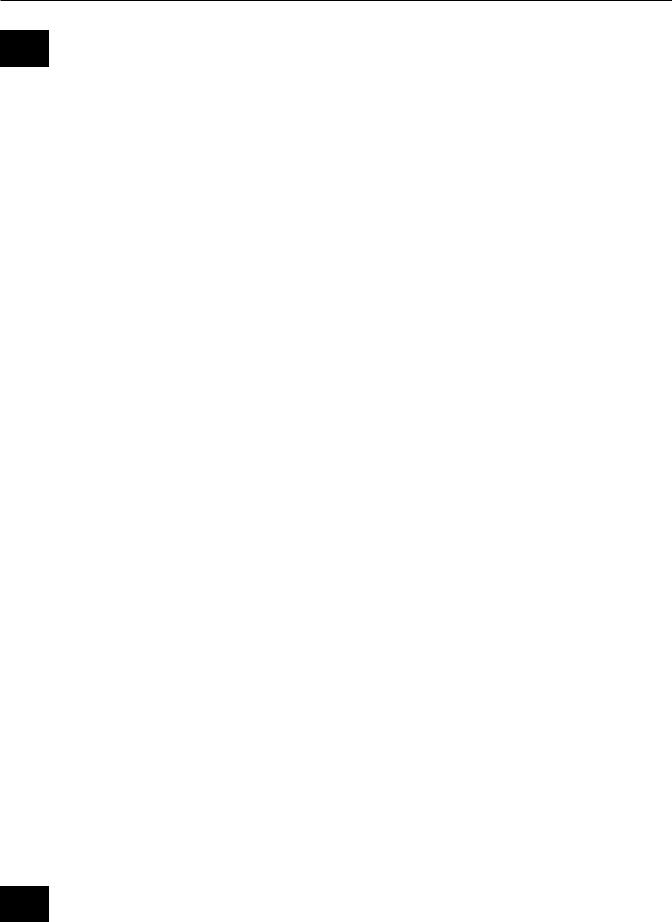
100 Module 6D / The Judicial Branch
C In groups, read each situation and answer this question: Why would the Supreme Court disapprove of the situation? On the line, write the name and year of the Supreme Court case that is the precedent.
1. |
|
Plyer v. Doe (1982) |
: |
|
|
Texas keeps the children of illegal aliens out of its public schools. |
|||
2. |
|
|
|
: |
California taxes all goods from Nevada. |
|
|||
|
|
|
||
3. |
|
|
: |
|
|
Oregon refuses to let a family move there from Washington because they have no home |
|||
|
and little money. |
|
|
|
4. |
|
|
: |
|
|
|
|||
|
Arizona sends a woman to jail because she went to the doctor to abort a two-month old |
|||
|
fetus. |
|
|
|
5. |
|
|
: |
|
|
Without permission, Nebraska takes land from an Indian reservation to build a state |
|||
|
prison. |
|
|
|
6. |
|
|
: |
|
|
A young man refuses to enter the U.S. Army because his sister does not have to serve in |
|||
|
the armed forces. |
|
|
|
7. |
|
|
: |
|
|
The police send a man to prison for drunk driving but do not give him an attorney because |
|||
|
he can’t afford one. |
|
|
|
8. |
|
|
: |
|
|
A public university refuses to admit a student because she is not white. |
|||
9. |
|
|
|
: |
|
You are the best-qualified candidate for police chief but the city won’t give you the job |
|||
|
because you are a woman. |
|
|
|
10. |
|
|
: |
|
|
|
|||
|
The INS sends a political refugee back to his country because he cannot prove that his |
|||
|
government would take his life. |
|
|
|
11. |
|
|
: |
|
|
|
|||
|
The police arrest a man and tell him to confess his crime on videotape in a room with no |
|||
|
one else present. |
|
|
|
12. |
|
|
: |
|
|
Congress makes the Speaker of the House the head of the armed forces even though the |
|||
|
Constitution gives that position to the President. |
|
|
|
D Do you know about other Supreme Court decisions? Tell the class.
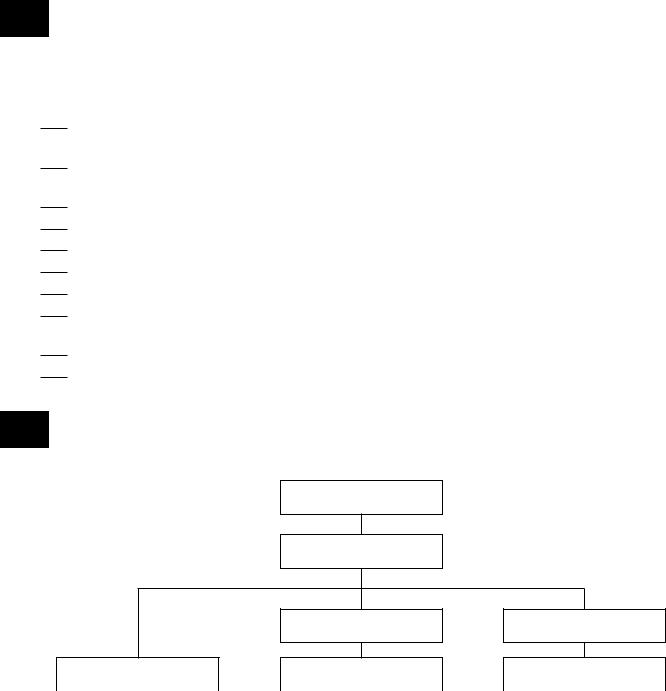
|
|
|
7 |
||
State Government |
UNIT |
||||
|
|
||||
|
|
|
|||
|
|
|
|||
Module 7A: |
Branches of Government and Officials |
||||
|
|
|
|
|
|
A Work in pairs. Tell your partner each fact about the federal government and listen to the corresponding fact about state government. Write S on the line if the facts are the same for both governments. Write D if they are different.
1. S The federal government is in the form of a democratic republic, which means that the people elect representatives.
2.It is a representative democracy because the people have the power through their elected representatives.
3.The government follows the principles of a constitution with its bill of rights.
4.The government has three branches with different responsibilities and powers.
5.The legislative branch has two houses that make laws.
6.The upper house is the Senate, and the lower house is the House of Representatives.
7.The leaders of the executive branch are the U.S. President and Vice President.
8.The President appoints the members of the Cabinet. These advisors (“Secretaries”) are the heads of federal departments.
9.The judicial branch of the federal government judges cases of federal law.
10.The highest court is the U.S. Supreme Court. There are also circuit courts of appeals and district courts.
B From the information in A on this page, write the missing words in the boxes.
U.S. Constitution
Federal Government
legislative
|
|
|
|
|
|
|
|
|
|
|
|
|
|
|
|
|
House of |
|
the |
|
Vice |
|
circuit courts of appeals |
||||
|
|
|
Representatives |
|
Cabinet |
|
President |
|
|
|
|||
|
|
|
|
|
|
|
|
|
|
|
|
|
|
|
|
|
|
|
|
|
|
|
|
|
|
|
|
101
